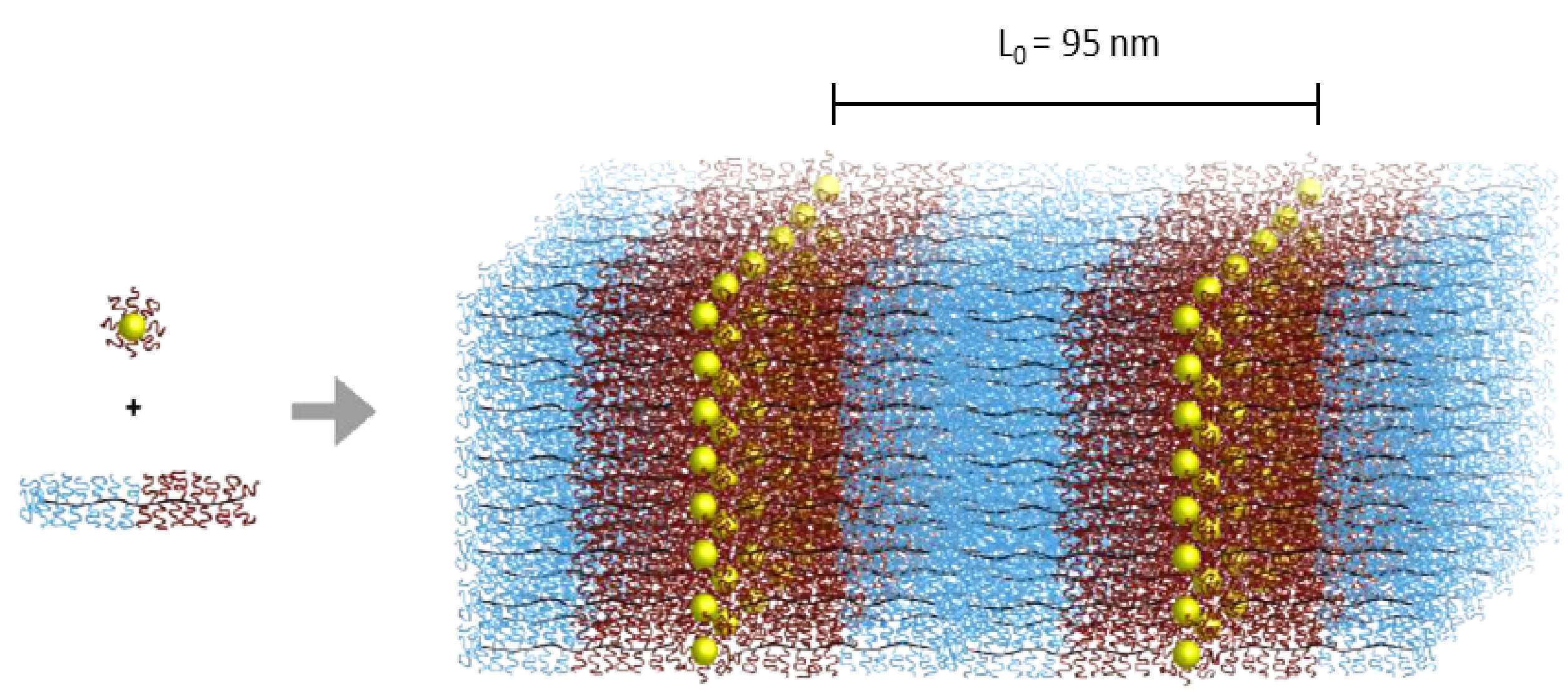
SELF-ASSEMBLY OF BOTTLEBRUSH BLOCK COPOLYMERS AND GOLD NANOPARTICLES IN THIN FILMS
The research on block copolymer-nanoparticle composites has attracted considerable interest in the last two decades. Block copolymers consisting of two chemically distinct polymers joined together by a covalent bond self-assemble upon annealing into various ordered microstructures (lamellae, cylinders or spheres), with periodicities on the scale of 1-100 nm that are dictated by the volume fractions of each blocks. The periodic nanostructures formed by the self-assembly of BCPs can be used to organize nanoparticles (NPs). The nanoparticle surface can be modified to interact selectively with one block of the copolymer, enabling the creation of periodic NP arrays, where the NPs are segregated in the domains formed by this block.
Bottlebrush block copolymers (BB BCPs) represent a new class of polymers with a unique, three-dimensional and highly tunable molecular architectures, which upon self-assembly form well segregated periodic nanostructures. The aim of this research is to push the limits of BCP/NP assembly by employing BB BCPs in order to achieve nanoparticle arrays with greater order (Figure 1). In this poster, initial results on the assembly of polystyrene-block-polylactide BB BCP with gold NPs will be discussed and compared to the assembly with the corresponding linear block copolymer.

Powered by Eventact EMS